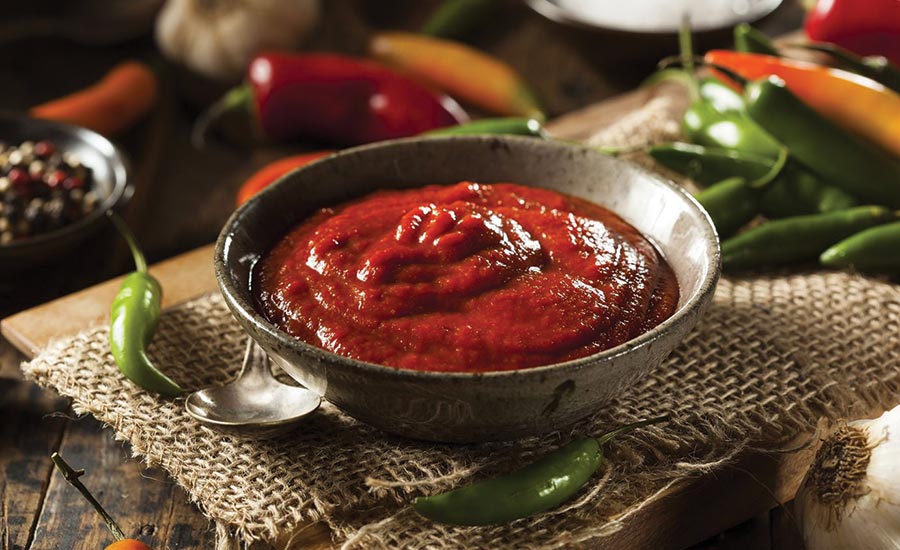US consumers are seeking hot and spicy flavor combinations, followed closely by savory. Menus and flavors are much more sophisticated than they have been in the past and the combinations of fresh, pickled, roasted and charred flavors really lend themselves to these profiles. Use of chiles and peppers specifically has increased on all menus and across several cuisines. With Americans welcoming heat to their palates, manufacturers can adapt more Hispanic and Latin flavors in their formulations.
Red jalapenos and smaller regional peppers like aji amarillo and chile pequin are making their way onto menus in addition to peppers, including fire-roasted poblano and dried guajillo. Consumers are showing a willingness to experiment with newer regional Latin flavors from Peru and Colombia. Some great uses for these include sauces, salsas and marinades.
“Our customers are consistently looking for authentic Latin flavors and products specific to their culture,” notes Executive Chef Fernando Desa at Goya Foods.
He says his experience shows that Mexican and South American flavors tend to favor hot and spicy flavors, while other Latin regions seek a more savory taste.
Also speaking out is Chef Christopher Hansen, corporate executive chef with the OSI Group.
“A variety of chiles add flavor and heat in many entrée items,” he says. “Some of the most popular fresh chiles on menus include jalapeno, serrano, habanero, poblano and New Mexico chiles (both red and green).”
He notes that milder Anaheim chiles and dried chiles, including guajillo, pasilla, ancho, morita and cascabel are showing up on menus.
For his part, Chef Desa says he likes to use “Latin fusion” to appeal across several cultures.
He observes, “While many Hispanics often keep true to the food they ate in their homeland, Latin cultures are blending and morphing here in the US, so I love to create Latin fusion recipes that cater to many tastes.”
Mintel surveys indicate that consumers try international cuisine at restaurants 60% of the time versus 40% at-home meals, the proliferation of good-tasting, healthy and easy-to-make dishes is boosting at-home experimentation.
Consumers are intrigued with cuisine posts on social media, including Pinterest, that have Latin influence and they are eager to try recipes at home. Desa adds that cooking shows food bloggers provide easy access to online recipes and demonstrations, which help consumers try new spices and recipes from other cultures—especially Latin cultures.
Peppers are an effective way to add various heat and flavor attributes to Hispanic dishes—from meats and mains, to soups and sides. Whether it is hot/spicy, savory or heat/sweet combination, there are limitless combinations to explore as consumers stamp their food “passports.” Trends from fine-dining continue to influence manufacturing and the variety in formulations and ideations for Hispanic cuisine are seemingly endless.
For more information:
Mizkan America, Inc.
1661 Feehanville Dr., Suite 300
Mt. Prospect, IL 60056
Dave.sackett@mizkan.com
Originally appeared in the April, 2018 issue of Prepared Foods as Passport to Flavor.
